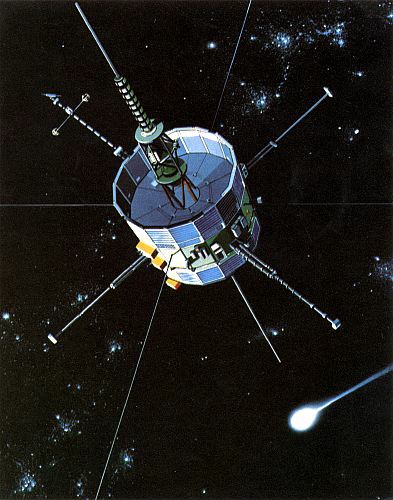First things first, the military mission: 20 years ago today — April 28, 1991 — the Space Shuttle Discovery launched on a dedicated DoD mission.
(Auroral image taken during the STS-39 mission. NASA image.)
The STS-39 crew — Michael L. Coats, L. Blaine Hammond, Guion S. Bluford, Gregory S. Harbaugh, Richard J. Hieb, Donald R. McMonagle, and Charles Lacy Veach — completed a combination of classified and unclassified mission objectives during their week in space.
On this same date a decade later — April 28, 2001 — the first “space tourist,” U.S. businessman Dennis Tito, rode aboard the Soyuz-TM-32 mission with cosmonauts Talgat A. Musabayev and Yuri M. Baturin. Their mission launched from the Baikonur Cosmodrome and docked with the International Space Station. I love the description of Tito in the linked write-up as “not a professional astronaut.”
And just 5 years ago today, the CloudSat and CALIPSO* meteorological satellites launched from Vandenberg AFB on a Delta-II rocket. They launched into the same orbit as the Aqua, PARASOL, and Aura satellites to join the A-Train of observational craft that pass overhead one right after the other.
___
*CALIPSO = Cloud-Aerosol Lidar and Infrared Pathfinder Satellite Observation, a U.S. and French collaborative spacecraft



















